Posts Tagged: field guide
Take a Bug Break--and Bring Along This Book
Don't take a coffee break. Take a bug break. Step into your garden, walk over to a community park, or hike in the wilderness and see what's out...
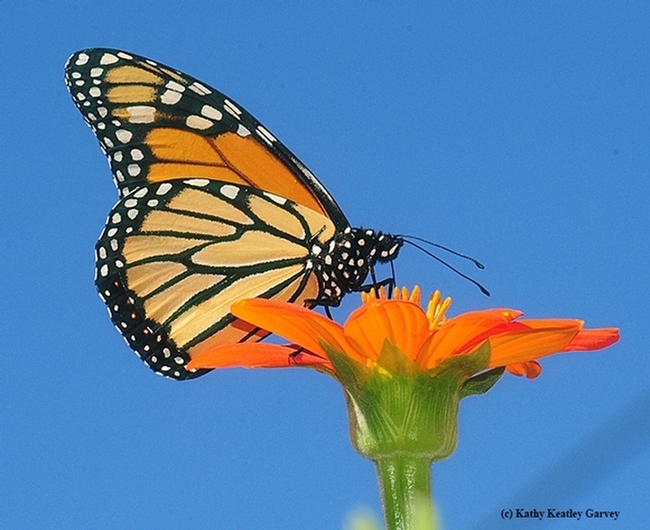
A monarch butterfly, Danaus plexippus, nectaring on a Mexican sunflower, Tithonia rotundifola. (Photo by Kathy Keatley Garvey)
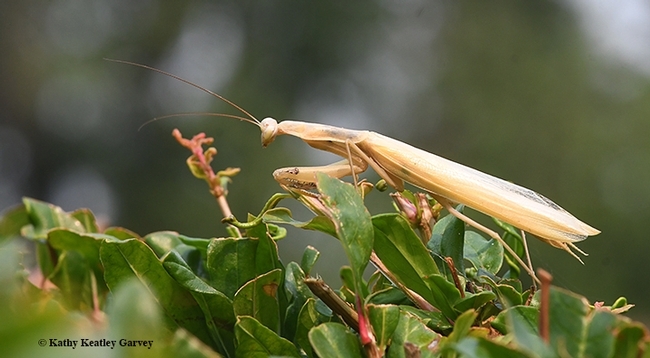
A praying mantis, Mantis religiosa, looking for prey. (Photo by Kathy Keatley Garvey)
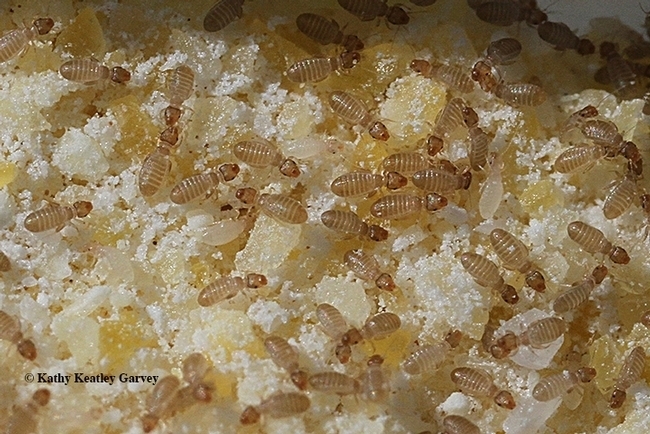
Booklice, Liposcelis bostrychophila, are nearly microscopic (about a millimeter long). You may find them in your cornmeal. (Photo by Kathy Keatley Garvey)
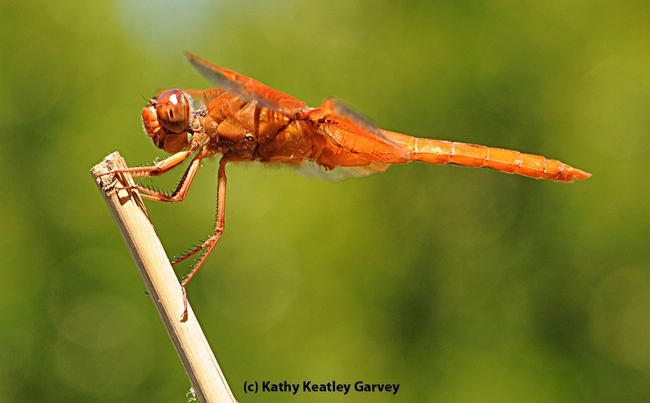
A flameskimmer dragonfly, Libellula saturata, perches on a stake. (Photo by Kathy Keatley Garvey)
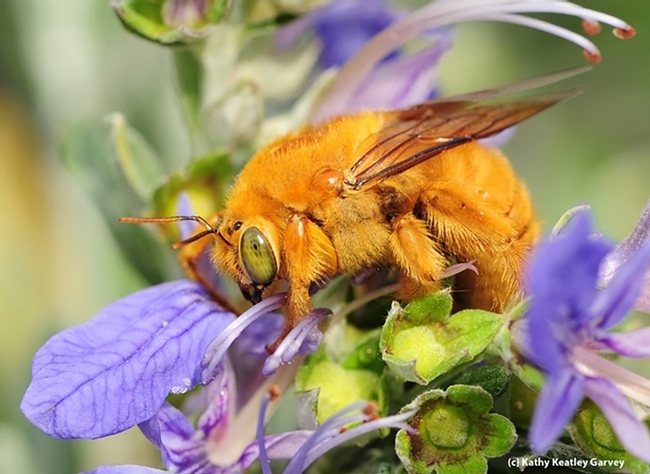
This is the male Valley carpenter bee, Xylocopa sonorina (formerly known as Xylocopa varipuncta). (Photo by Kathy Keatley Garvey)
The Fluttering of Butterflies and Why This 4-H Project Is Important
Bet you've never seen a butterfly like this! The colorful butterfly seemed to flutter from a blanket that Solano County 4-H'er Erica Lull was sewing...

This butterfly-themed blanket is the work of Erica Lull for the "Cuddle Me Close" 4-H community service project. (Photo by Kathy Keatley Garvey)
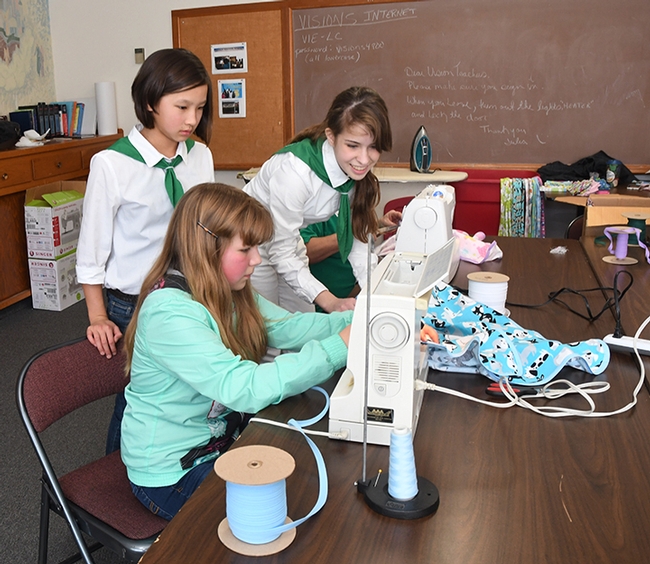
Junior 4-H leader Erica Lull (right, in the back) of the "Cuddle Me Close" project oversees the work of Suisun Valley 4-H Club member Clairese Wright (seated) while Kate Frenkel, also of Suisun Valley 4-H, watches.
Don't Be Bugged by Bugs
I’ve never been a fan of bugs, but once I learned more about them during my Master Gardening program, I’ve become somewhat obsessed. Not an obsession like, now I love them, but an obsession in that I am much more aware of them in my every day surroundings, and usually do my best to figure what kind each one is that I run across. Here are a couple examples of this new “obsession”:
Out for a lovely walk in the Benicia Recreation area with my fiancé and our puppy, I glanced down and saw a bug, so I immediately squatted down to inspect further. Sure enough, it was the very same bug that was on our final exam … a ground beetle! My puppy wanted to inspect further, but I hurried her away saying “that’s a ‘good bug’, so you have to leave it be!”
At work, there was a very odd and quite honestly very creepy-looking bug crawling across my floor right towards me, but instead of stamping on it like I would have been previously inclined, I flipped a clear container over it and a slide a piece of paper under it. I then brought it to a table for further inspection. Turns out, this one was a House Centipede (Scutigera coleoptrata), deemed a “good bug”, so I took my homemade trap outside and shook that creepy guy far away from my office door.
It helps to have at least one of a few great resources accessible as often as possible: a Mac’s Field Guide-- a nicely laminated card of Good/Bad Garden Bugs; the book: Pests of Landscape Trees and Shrubs and Integrated Pest Management Guide; or the IPM website, Pests in Gardens and Landscapes: http://www.ipm.ucdavis.edu/PMG/menu.invertebrate.html
Of course, everyone knows ladybugs (or “lady beetles” to be more accurate), and without knowing much about them, I think most of us assume they can be categorized as a “good bug”. But here are the specifics about lady beetles and why they are “good”: They are predaceous on aphids and occasionally other soft-bodied Homopterans, used for aphid control in roses and can be important in every crop with aphid pests.
And how about rolly pollies? Ever since most of us were kids, these cute little fellas were most likely deemed as “good bugs” just because they were fun! But here is a little-known fact about them: They are actually called pillbugs and are not insects at all, but soil-dwelling crustaceans in the Isopod order, more closely related to crayfish than to insects. They feed primarily on decaying plant material and are very important in the process of decomposing organic matter in the garden. So yes indeed, they are absolutely “good bugs”.
My point in all this that even if you’re not a fan of bugs, that’s no reason to kill them if you run across them, especially if you are out and about on their turf. Still, if they cross your doorstep and are on your turf, I encourage you to think twice before you squish them -- if they can be easily identified as a “good bug”, then why not capture them and put them back out on their turf? After all, they can do good things for you out in your yard and garden – cheap labor! J
I wish you all Happy Bug-watching!

Ground Beetle (photos by JoEllen Myslik)
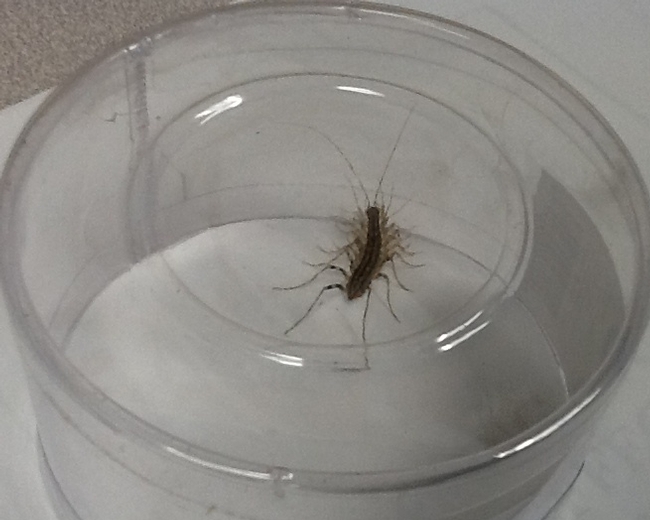
House Centipede

Macs Field Guide and captured flying insect.
Great Field Guide to Bees
If you've studied bees, you know that there are approximately 20,000 described species of bees in the world. Most people are familiar with honey...

This photo, appearing in the field guide, is of Extension apiculturist Eric Mussen being stung by a honey bee. (Photo by Kathy Keatley Garvey)
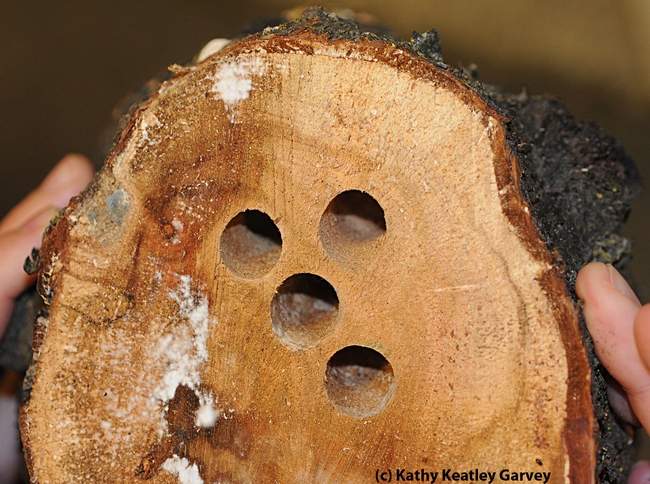
This photo in the field guide shows a chunk of plum tree wood drilled by valley carpenter bees. (Photo by Kathy Keatley Garvey)

